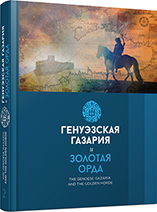Адыгская керамика из археологических памятников XIII—XV веков в фондах Государственного музея Востока
Adygean Pottery from the Archaeological Sites of the 13th—15th Centuries AD from the Collections of the State Museum of Oriental Art
Author(s): Ludmila M. Noskova
Subject(s): History, Archaeology, Middle Ages, 13th to 14th Centuries, 15th Century
Published by: Издательский дом Stratum, Университет «Высшая антропологическая школа»
Keywords: North-Eastern Black Sea region; Adygea; Golden Horde period; 13th—15th centuries; cemetery; kurgan; ceramics; pottery
Summary/Abstract: The article discusses a small collection of ceramics of 13th—15th centuries from the excavations of the Caucasian archaeological expedition of the State Museum of Oriental Art in Adygea and on the Eastern Black sea coast of the Caucasus. Most of the pottery comes from the Shendjiy kurgan cemetery (Adygea) and Kabardinka kurgan cemetery (near Gelendzhik). Several vessels were found on the banks of the Krasnodar water reservoir, where late medieval funerary sites are situated. The material divides into two groups: one originates from the left bank of the Kuban river, and the other one from the Black Sea region. Vessels come in different forms, mostly jugs and mugs. All the vessels are made of red clay, which is typical for Adygea ceramics of the Golden Horde time made with the help of potter’s wheel of slow rotation. Most of the jars in the second group have a rim in the shape of oenochoe, with spout on the side or opposite the handle, which is a feature of vessels from the Black Sea region, never found on the left bank of the Kuban River. At the same time, jugs with tubular spout — an imitation of metal jugs — appear among the ceramic finds. In general, ceramic forms represented in the collections of the Museum of the Oriental Art complement the main types of vessels, common in the North-Western Caucasus in the 14th—15th centuries.
Book: Генуэзская Газария и Золотая Орда
- Page Range: 589-598
- Page Count: 10
- Publication Year: 2019
- Language: Russian
- Content File-PDF

